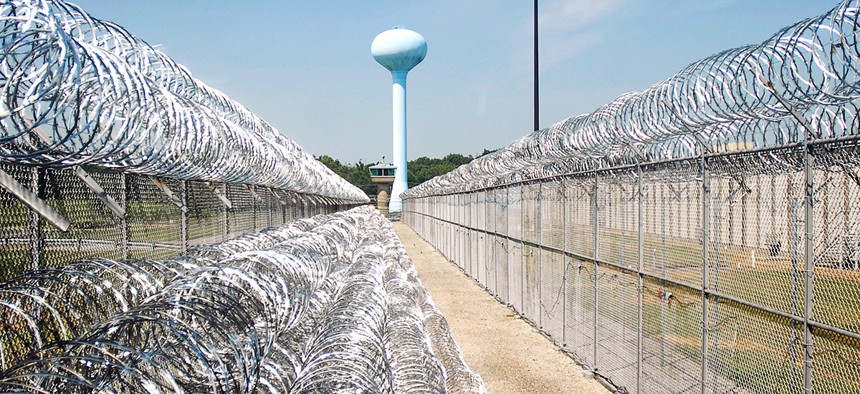How Old is Too Old For a Federal Prisoner To Be Jailed?
Agencies are rethinking criteria for a program that lets elderly and infirm inmates out of prison early.
When you're locked in federal prison, how old do you have to be to count as "aging"?
That's the question two federal agencies are grappling over, and the answer they pick will determine how the government spends more than $800 million in public funding for prisons. And for tens of thousands of federal inmates, it could mean the difference between becoming eligible for a late-life release program and spending their twilight years behind bars.
The Federal Bureau of Prisons is struggling to adjust to an aging prison population, a product, in part, of criminal-justice reforms of the late 1980s that dramatically reduced federal parole and imposed mandatory minimum sentences for some offenses. In fiscal 2013, the Federal Bureau of Prisons spent nearly 20 percent of its $6.9 billion budget to incarcerate inmates aged 50 and older. And without a policy intervention, those costs are set to rise: Inmates aged 50 and older make up the fastest-growing segment of the prison population, according to Justice Department Inspector General Michael Horowitz.
To meet those costs, the Bureau of Prisons is requesting a 6.1 percent increase in funding for fiscal 2016, an increase from the bureau's $6.9 billion budget in 2015.
But in a report released in May, the Justice Department Office of the Inspector General suggested the Bureau of Prisons consider an alternative solution: expand a "compassionate-release" program that reduces the term of imprisonment for elderly inmates.
To be eligible for the reduced sentencing program, inmates must have "chronic or serious medical conditions relating to the aging process" that "substantially diminish their ability to function in a correctional facility" for which "conventional treatment promises no substantial improvement," according to a statement from the Bureau of Prisons. They must also have served more than half of their sentence. For inmates looking for early release under nonmedical circumstances, the time-served bar is higher: "the greater of 10 years or 75 percent of their term."
"As with all compassionate-release determinations, the BOP considers whether the offender poses a danger to the safety of another person or to the community," the statement said.
But for any of the above criteria to be considered, the inmate must be aged 65 or older.
The Inspector General report did not explicitly call on the Bureau of Prisons to lower the limit in its May report. Instead, it recommended the bureau reconsider the age bar and noted the potential advantages of setting it at age 50.
The lower threshold would cut incarceration costs and relieve prison overcrowding without significantly increasing recidivism rates, the report said. The report notes several ways in which prisoners 50 and over differ from the rest of the prison population. Older inmates cost an average of 8 percent more to confine, but they are also less likely to end up back in prison after release. While the recidivism rate among all prisoners is 41 percent, for those released after age 50, the rate falls to 15 percent.
According to the Inspector General report, lowering the threshold age from 65 to 50 and instituting a 5 percent release rate for only those inmates in minimum or low-security institutions or medical centers could reduce incarceration costs by approximately $28 million per year.
Federal prisons with the most aging inmates spent "five times more per inmate on medical care" and "14 times more per inmate on medication" than institutions with the fewest aging inmates, the report said.
The 65-or-over bar for the program is relatively new, set in 2013 in an effort to clarify the release program's eligibility criteria following a separate Inspector General report released earlier that year.
The two agencies split over how effective the program has been since that time. The Inspector General report said that between August 12, 2013, and September 12, 2014, only two of the 348 inmates who were qualified to make requests were let out.
The Bureau of Prisons said that the Inspector General report does not present "the full picture." From August 2013 to August 11, 2015, 21 elderly inmates without medical conditions and seven elderly inmates with medical conditions have been released under the program, the bureau statement said.
For now, it's unclear whether the Bureau of Prisons will lower the minimum age for its compassionate-release program.
In its response to the May Inspector General report, the agency said it would "raise the issue with relevant stakeholders for further discussion." It also, however, noted that the Inspector General report wasn't explicitly recommending a lower age, instead only recommending that the change be considered.



